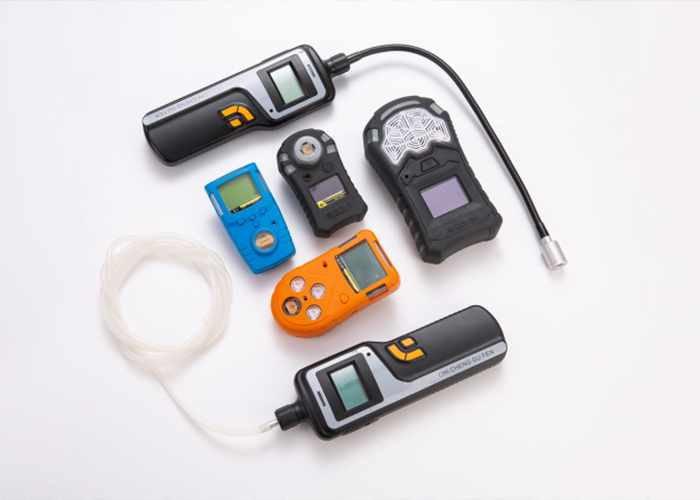With the continuous development of the industrial industry, enterprises are using more and more gases, and there are also various types of toxic and harmful gases produced during the production process. If these gases are not used or protected properly, they will cause serious harm to people’s lives and property. Therefore, it is very important to do a good job of gas safety detection in time.
Portable gas detectors are instruments used to detect whether there are dangerous gases (flammable, explosive, toxic, oxygen, etc.) in a certain environment. They are widely used in environmental testing, confined space operations, manual inspections, etc.

However, sometimes users report that portable gas detectors are more “delicate”: data drift, alarm failure, equipment damage, etc. Portable gas detectors malfunction and damage make it impossible to monitor the gas concentration in the environment and alarm normally, which buries huge safety hazards for operators.
So is it the quality of the equipment itself that is not up to standard? Or is there a problem with the user’s operation? Today, let’s discuss it together!
What is a portable gas detector?
Portable gas detectors are instruments that professionally detect the concentration of flammable or toxic and harmful gas leaks in the environment. Due to its convenience and versatility, as well as its high reliability of rapid response and timely warning, it has become the most powerful gas detection tool in the fields of industrial safety monitoring, municipal environmental monitoring, emergency response, construction, agricultural planting, oil and gas extraction, and family life, providing great convenience for social development and safe production.
Portable gas detectors generally include single gas detectors, four-in-one gas detectors, six-in-one gas detectors, etc.
1. Single portable gas detector: a detection instrument that can detect a toxic gas. The specific toxic gas to be detected can be flexibly configured according to the main gas present in the environment of the site, so as to detect it in a targeted and efficient manner.
2. Four-in-one portable gas detector: a detection instrument that can detect four flammable and toxic gases at the same time. The standard four-in-one portable gas detector can detect four gases: combustible gas, oxygen, hydrogen sulfide and carbon monoxide.
3. All-in-one gas detector: This instrument can detect more types of flammable/toxic gases, especially suitable for complex chemical production environments. Generally, this detector needs to be customized by the manufacturer and can detect more than 5 different gases.
Analysis of common causes of failure of portable gas detectors: limited ability to adapt to harsh environments
Portable gas detectors are often used in harsh industrial environments and sites. High and low temperatures, humidity, dust and pollutants will not only damage the electronic components and sensors inside the instrument, but also cause the sensor to be blocked, affecting the transmission of signals.
Unable to resist the interference of chemical substances: In some detection scenarios, in addition to the toxic gases detected by the target, there are other complex chemical substances, which will react with the sensor, causing the sensor to misjudge, and even cause the sensor to be poisoned, resulting in decreased or missing sensitivity.
Shell protection design: IP level determines environmental adaptability
If the portable gas detector is often hit, dropped or strongly vibrated during use, both the internal precision electronic components and the external probes may be displaced or damaged, causing the instrument to fail to work properly. Portable gas detectors reach IP67 level, which is highly dustproof and waterproof; while IP54 devices are only suitable for indoor use and are easily damaged when exposed to complex environments.
Lifespan limitations of portable instruments: Different types of gas detectors have their own lifespan limits. When the sensor exceeds its lifespan, it will age, which will not only reduce the detection accuracy, but also increase the response time and may even fail completely, so it needs to be replaced in time.